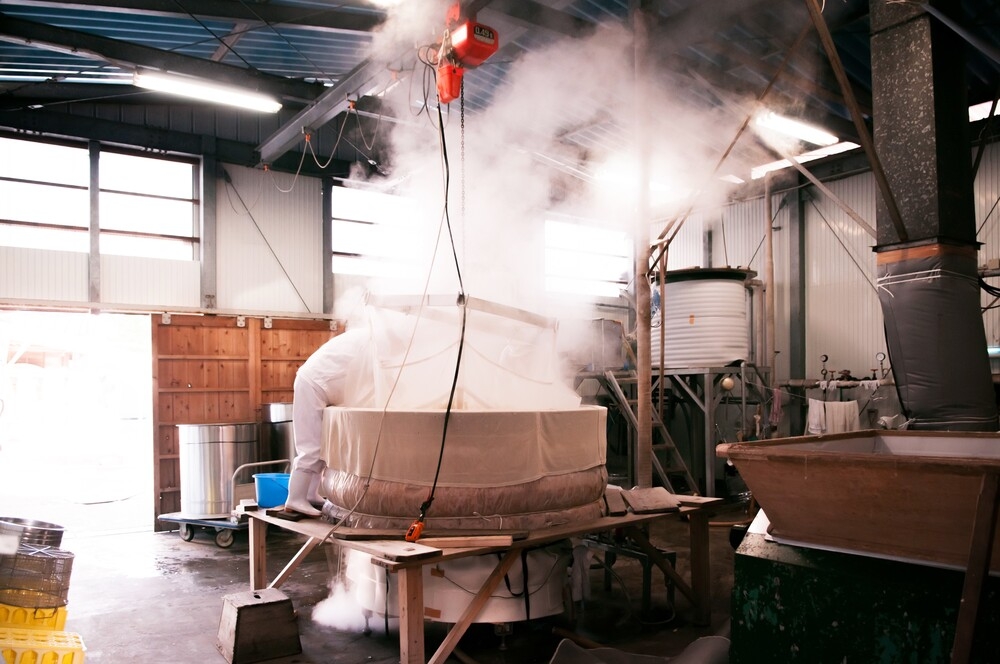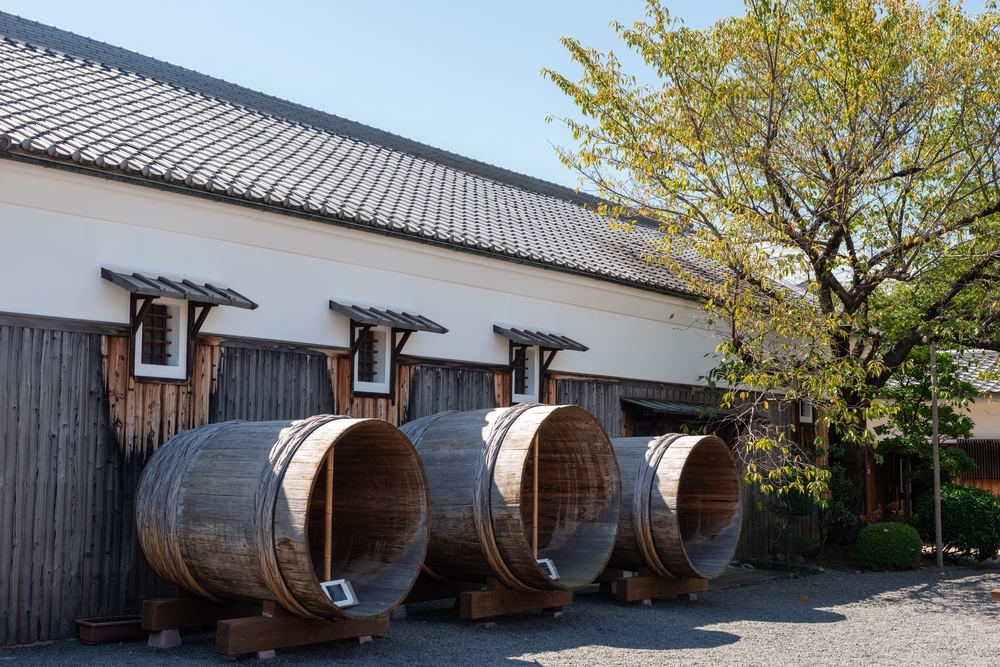SPOT
Sake brewery in Japan
December 26, 2024
Sake, locally known as nihonshu, is Japan’s beloved national tipple. In time honored tradition, it is crafted from rice, water, and koji fungus cultures. The brewing process is a delicate balance combing both art and science and requiring precise attention to detail. It begins with the careful polishing of rice to remove the outer layers. The more the rice is polished, the finer and more refined the sake. After steaming the rice, koji is added to convert starches into fermentable sugars, followed by the addition of yeast to start fermentation. Over 18 to 32 days, the mash is carefully monitored, with master brewers adjusting temperature and ingredients to perfect the flavor profile.
Sake comes in various types, including junmai (made without added alcohol), honjozo (light and smooth with a small amount of alcohol added); and ginjo (fruity and complex, made with rice polished to 60%). The most premium sake, daiginjo, uses rice polished to 50%, resulting in a delicate, refined taste.
Some of Japan's most famous sake breweries include Otokoyama Sake Brewery in Hokkaido, known for its centuries-old history and once favored by the Tokugawa Shogunate. Suehiro Sake Brewery in Fukushima has earned numerous awards for its sake, including Gensai Nihonshu. The Sawanoi Sake Brewery near Tokyo offers free tours, where you can sample their products made with fresh water from the nearby Tama River. In Kyoto’s Fushimi Sake District, water from the Horikawa River contributes to the production of clean, smooth sake, including that from the renowned Gekkeikan Brewery.
Whether you visit a district like Nada, where brewers have collaborated for centuries, or explore local gems like the Aizu Sake Museum in Fukushima, sake remains a deeply rooted cultural tradition in Japan, offering a taste of the nation’s history, craftsmanship, and regional diversity.
Sake comes in various types, including junmai (made without added alcohol), honjozo (light and smooth with a small amount of alcohol added); and ginjo (fruity and complex, made with rice polished to 60%). The most premium sake, daiginjo, uses rice polished to 50%, resulting in a delicate, refined taste.
Some of Japan's most famous sake breweries include Otokoyama Sake Brewery in Hokkaido, known for its centuries-old history and once favored by the Tokugawa Shogunate. Suehiro Sake Brewery in Fukushima has earned numerous awards for its sake, including Gensai Nihonshu. The Sawanoi Sake Brewery near Tokyo offers free tours, where you can sample their products made with fresh water from the nearby Tama River. In Kyoto’s Fushimi Sake District, water from the Horikawa River contributes to the production of clean, smooth sake, including that from the renowned Gekkeikan Brewery.
Whether you visit a district like Nada, where brewers have collaborated for centuries, or explore local gems like the Aizu Sake Museum in Fukushima, sake remains a deeply rooted cultural tradition in Japan, offering a taste of the nation’s history, craftsmanship, and regional diversity.


